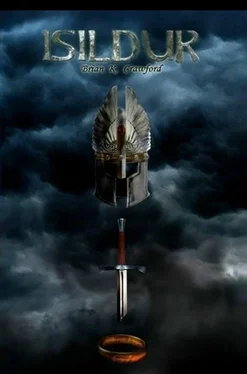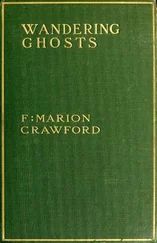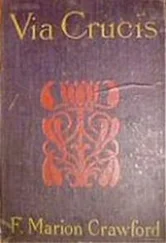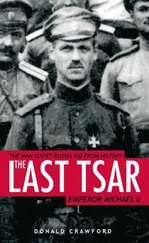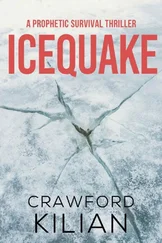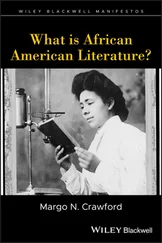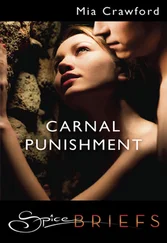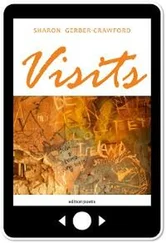Brian Crawford - Isildur
Здесь есть возможность читать онлайн «Brian Crawford - Isildur» весь текст электронной книги совершенно бесплатно (целиком полную версию без сокращений). В некоторых случаях можно слушать аудио, скачать через торрент в формате fb2 и присутствует краткое содержание. ISBN: , Жанр: Фэнтези, на английском языке. Описание произведения, (предисловие) а так же отзывы посетителей доступны на портале библиотеки ЛибКат.
- Название:Isildur
- Автор:
- Жанр:
- Год:неизвестен
- ISBN:B002ADBQEO
- Рейтинг книги:3 / 5. Голосов: 1
-
Избранное:Добавить в избранное
- Отзывы:
-
Ваша оценка:
- 60
- 1
- 2
- 3
- 4
- 5
Isildur: краткое содержание, описание и аннотация
Предлагаем к чтению аннотацию, описание, краткое содержание или предисловие (зависит от того, что написал сам автор книги «Isildur»). Если вы не нашли необходимую информацию о книге — напишите в комментариях, мы постараемся отыскать её.
Isildur — читать онлайн бесплатно полную книгу (весь текст) целиком
Ниже представлен текст книги, разбитый по страницам. Система сохранения места последней прочитанной страницы, позволяет с удобством читать онлайн бесплатно книгу «Isildur», без необходимости каждый раз заново искать на чём Вы остановились. Поставьте закладку, и сможете в любой момент перейти на страницу, на которой закончили чтение.
Интервал:
Закладка:
Isildur
by Brian K. Crawford
with Gary D. Crawford
Three Rings for the Elven-kings under the sky,
Seven for the Dwarf-lords in their halls of stone,
Nine for Mortal Men doomed to die,
One for the Dark Lord on his dark throne
In the Land of Mordor where the Shadows lie.
One Ring to rule them all, One Ring to find them.
One Ring to bring them all and in the darkness bind them
In the Land of Mordor where the Shadows lie.
Acknowledgements
The idea for writing this book was suggested by my brother Gary. Together we developed the plot outline and sketched out the major characters. We divided up the chapters and began writing them, but then Gary moved to Virginia. The project continued by mail for a time, but gradually ground to a stop. The half-finished manuscript sat in a drawer for nearly twenty years. Then, as part of my nightly bedtime reading to my son Nathan, I read him first The Hobbit, then The Lord of the Rings.
It was a joy to me to see him moved by the same scenes that had moved me at my first reading some thirty years earlier. Together we sat in the firelight of the last homely house in Rivendell and heard the history of the Ring; together we hurtled through the dark lands of Rohan on Shadowfax with Gandalf and Pippin; together we stood with Sam on the high pass of Cirith Ungol and looked out into Mordor.
When all the tales were done at last, Nathan looked at me and said, "I'm sorry we finished it. I wanted it to go on." Then I recalled the manuscript in my files. I pulled it out and reread what Gary and I had written so long ago. I resolved to finish it for Nathan, so we would have one more story of Middle-earth to share. I read the second draft to him as I wrote it, which kept me at the thankless job of revision because I had to have one night's reading done every day.
Without Gary's inspiration in the beginning and Nathan's at the end, I never would have been able to write this book. I give them my thanks and my love.
I also acknowledge my debt and thanks to Professor Tolkien, without whom Middle-earth itself would never have existed. He did not approve of other authors "spinning off" from his original work and would not give us permission to publish this book. It is therefore self-published only for the enjoyment of our family and friends. This is perhaps just as well, for I would not wish to have my work compared with the master's. Nevertheless, I shall always be grateful to him for enriching our lives with his creation.
Preface
Of all extant records of that ancient and remarkable race the hobbits, the best preserved and least fragmentary is of course the famous Red Book of Westmarch, by Bilbo Baggins and others, dating from the late Third Age and early Fourth. As well as being an invaluable source of information about a remote time, it contains many vivid accounts and stirring tales that can stand on their own as literature. Unlike most ancient documents, its fame has spread beyond the quiet world of scholarly research to achieve no little public acclaim, due largely to the excellent and entertaining novelized version published by Professor J. R. R. Tolkien of Oxford and called by him The Lord of the Rings. His popularization manages to bring fire and life to the old records without sacrificing historical accuracy. It has made history come alive for many thousands who otherwise would have been completely unaware of the people and events of those fascinating eras now known collectively and rather inaccurately as Middle-earth.
Many lay readers of Tolkien's work may however be unaware that the Red Book is far from the only record of Middle-earth. While nothing remains of the libraries of the Quendi (that mysterious people that Professor Tolkien translated as "Elves") or of the men of the era, some contemporary works have miraculously enough survived down to our time. In fact the hobbits kept excellent records, and the great library of the Tooks at the Great Smials in Tuckborough must have been truly magnificent in its heyday. Fortunately for us, hobbits were very diligent about protecting and preserving their ancient books, and a rather extensive remnant of the library has been preserved. Most of the original documents have of course long ago crumbled into dust, but careful copying over the millennia has preserved their contents.
Even the famous Red Book did not survive in the original. In fact, it has come down to us by a tortuous and fortuitous path. Peregrin Took, Thirty-Second Thain of the Shire, had ordered a copy made early in the Fourth Age. When he retired to Gondor in 64 Fourth Age, he took the copy with him and gave it to King Elessar I. It was long kept in the famed library of Minas Tirith, which burned, to our eternal loss, some four hundred years later. However, in 172 Fourth Age, Findegil, the Writer of King Eldarion II, made an exact copy of the Red Book at the request of Faramir II, Thirty-fifth Thain, and that copy went again north to be kept in the Took Library. This is the copy that has descended to us through countless generations of farsighted minds and careful hands. While the other surviving documents are less complete than the Red Book, they are no less interesting, for they tell us in detail of other fascinating matters not covered in the Red Book.
Of all the events of those far-off days, the most stirring are those that were recognized even by their participants as so momentous as to signal the end of an age and the beginning of a new. These are the times of great change and upheaval, of war and danger. But they are also the times when heroes stand forth, when brave men and women risk everything for their beliefs against seemingly insurmountable obstacles. Their struggles, their defeats, and their triumphs, reach across the gulfs of time to move us still.
As these words are being written, work is going forward on the translation, editing, and publishing of The Silmarillion, the account of the end of the First Age, as The Lord of the Rings told of the end of the Third. But nothing so far has been published of the momentous events at the end of the Second Age. The Red Book is sadly incomplete on that earlier war against the Great Enemy, Sauron. Fortunately, other chronicles exist that deal with the Second Age.
Shortly after the end of the War of the Rings, both Thain Peregrin and Meriadoc, Master of Buckland, resolved to preserve what they could of the old lore. They travelled extensively in Rohan, Gondor, and Rivendell, collecting information and documents from many sources. Peregrin and his many descendants organized and edited this material into a fascinating book, now called The Thain's Book. This remarkable manuscript is rich in the lore of the Second Age. In addition, a very few of the source documents for this book have survived, notably The Tale of Years, an anonymous history of Middle-earth from the point of view of the hobbits.
Several accounts exist of the important Council of Osgiliath which took place on Loëndë, Midsummer's Day, in 3441 Second Age. The source used for the current work is a set of large foolscap sheets, entirely covered with a very minute but legible hand. They were kept rolled in sheepskin, and the remains of a binding ribbon of indeterminate color may still be seen. The original source of this account was written in the first year of the Third Age by Halgon, King's Writer of Gondor, at the order of Isildur himself. It was presumably included in the now-lost Chronicle of the Kings, a history of the Kingdom of Gondor from its founding in 3320 Second Age until the end of the Telcontar dynasty over a thousand years later. The copy at Tuckborough bears the following preface: "This tale and several others were copied by Peregrin the First, Thain of the Shire, on his visit to Minas Tirith in the year 1441 [20 Fourth Age]. A few archaic terms and forms have been altered to conform to modern Westron usage, but otherwise it is an exact copy of Halgon's manuscript. Copied by my hand, this year of 1486 [65 Fourth Age], by Isengar, son of Isembold, Thain's Scribe."
Читать дальшеИнтервал:
Закладка:
Похожие книги на «Isildur»
Представляем Вашему вниманию похожие книги на «Isildur» списком для выбора. Мы отобрали схожую по названию и смыслу литературу в надежде предоставить читателям больше вариантов отыскать новые, интересные, ещё непрочитанные произведения.
Обсуждение, отзывы о книге «Isildur» и просто собственные мнения читателей. Оставьте ваши комментарии, напишите, что Вы думаете о произведении, его смысле или главных героях. Укажите что конкретно понравилось, а что нет, и почему Вы так считаете.
